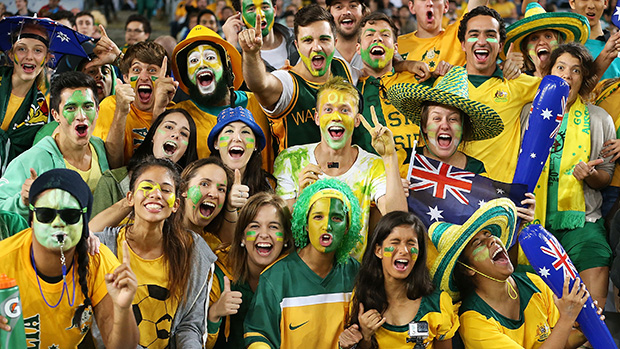A new study has found that over 3.8 million Australians (19.1 per cent ) watch soccer of one sort or another on TV (FIFA World Cup, A-League, English Premier League etc.) and the favoured TV viewing experience is the FIFA World Cup watched by over three million Australians (14.9 per cent).
The Roy Morgan study found that when the World Cup Finals roll around every four years viewership spikes significantly and in 2014 over 4.2 million Australians (21.9 per cent) watched the World Cup Finals in Brazil.
This year’s World Cup Finals in Russia will inevitably lead to a significant spike in viewership to challenge the high of over 4.2 million viewers achieved four years ago.
The FIFA World Cup is considerably more popular among men than women. Over 2.1 million men watch the FIFA World Cup compared to just under 900,000 women and these enthusiasm levels are replicated when analysing the TV viewing habits of different generations.
Generation X just pips Millennials to be the generation most interested in watching the FIFA World Cup on TV. Nearly 870,000 members of Generation X watch the FIFA World Cup on TV compared to around 770,000 Millennials.
Some 26.6 per cent of men in Generation X and 25.1 per cent of Millennial men watch the FIFA World Cup on TV compared to 19.6 per cent of men in Generation Z, 18.4 per cent of Baby Boomer men and 14.2 per cnet of pre-Boomer men.
FIFA World Cup viewing by Generation & Gender – 12 months to March 2018
Over 10 per cent of Generation X women watch the FIFA World Cup on TV – a higher proportion than any other generation. However, in contrast to men, it is the youngest women of Generation Z that are the next most interested in watching the FIFA World Cup on TV. Some 8.6 per cent of women in Generation Z watch the FIFA World Cup on TV compared to 7.9 per cent of Millennial women and 7.4 per cent of Baby Boomer women.
Interest in FIFA World Cup spikes significantly when tournament is held
Analysing the long-term trends on TV viewership of the FIFA World Cup shows the positive impact the holding of the tournament has on attracting people to watch the games.
During and immediately after the 2014 FIFA World Cup Finals held in Brazil, nearly five per cent more Australians said they watch the FIFA World Cup in six monthly period of June – November 2014 (21.9 per cent) compared to the six monthly period immediately preceding the tournament between December 2013 – May 2014 (17 per cent).
Since peaking immediately following the previous tournament TV viewership of the FIFA World Cup has fallen by around a third and in the six month period to March 2018 14.9 per cent of Australians now say they watch the FIFA World Cup on TV.
FIFA World Cup TV viewing by Australians aged 14-plus 2013 – 2018
Commenting on the study, Roy Morgan CEO Michele Levine said: “The Socceroos journey to the FIFA World Cup was longer than any other team at Russia 2018 playing 22 games and traveling an estimated 250,000km in qualifying before victory against Honduras secured one of the last spots at the showpiece. For Australian fans enjoying the spectacle in Russia this month it was certainly worth it.
“Over 3.8 million Australians watch World football of one sort or another on TV and over 3 million Australians (14.9 per cent) specifically watch the FIFA World Cup on TV.
“Unsurprisingly it is Australian men of all ages who are the biggest fans of the FIFA World Cup compared to similarly aged women. Over a quarter of men in the highly coveted age brackets covered by Generation X (26.6 per cent) and Millennials (25.1 per cnt) say they watch the FIFA World Cup on TV – more than twice the rate of women of the same age. Men in these generations were born between 1961-1990 and are now aged 27-57 years old.
“Although viewership does drop off for the youngest generation born between 1991-2005 known as Generation Z, it is worth remembering that some members of Generation Z were only nine or ten years old the last time Australia played in a FIFA World Cup and are likely still developing their passion for the game.
“A quick look at the figures for the different States shows interest in the FIFA World Cup is highest in Australia’s two largest States. Some 17.1 per cent of people living in NSW say they watch the FIFA World Cup on TV and as do 16.8 per cent of Victorians compared to only 9.5 per cent of Tasmanians. The fact over half of Australia’s A-League teams are based in these two States also indicates the level of interest for World football particularly in Melbourne and Sydney,” Levine said.










